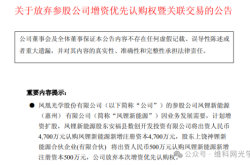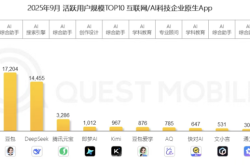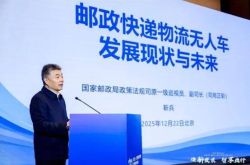"Low Prices and Refunds Only" Trend Recedes as E-commerce Giants Regain Their "Sense of Boundaries"
![]() 08/13 2024
08/13 2024
![]() 496
496

As e-commerce giants such as Taobao and Tmall, and Douyin confront Pinduoduo, they are bidding farewell to the one-size-fits-all strategy of "low prices and refunds only" and returning to their GMV growth targets, embarking on a new chapter of multi-dimensional and stratified competition.
The receding trend of low-price competition seems to have come unexpectedly.
Entering July, Douyin initially downplayed the importance of its low-price strategy. According to reports, Douyin E-commerce adjusted its operational goals, no longer prioritizing "price competitiveness" and instead focusing on GMV (Gross Merchandise Volume) growth in the second half of the year.
Subsequently, on July 26, Taobao and Tmall made intensive adjustments to merchant rules, with the most crucial aspect being the relaxation of the "refunds only" policy for high-rated stores. The price comparison system and the "refunds only" policy, as key components of the low-price strategy, were loosened, suggesting that Taobao and Tmall were also wavering on their commitment to low prices. In fact, after 618, Taobao and Tmall began to de-emphasize price competitiveness, no longer benchmarking Pinduoduo, with GMV becoming the primary business metric.
As the initiator of the low-price strategy, Pinduoduo has also recently taken action. According to reports, Pinduoduo adjusted its business priorities in the second quarter of this year, shifting from commercialization and profit enhancement to prioritizing GMV growth.
At this point, the over-year-long low-price battle seems to be calming down.
Looking back at the beginning of this low-price strategy competition, Pinduoduo's rapid growth and the fatigue of major e-commerce giants undoubtedly sparked the transformation. In 2023, with Jack Ma's return to Taobao, it was clear that Taobao and Tmall would "return to users." Alibaba subsequently launched a series of strategic adjustments, with the most noticeable change for consumers being lower prices, red envelopes, and subsidies totaling tens of billions of yuan. Meanwhile, in 2023, Douyin followed Pinduoduo's strategy, vigorously introducing white-label and small-to-medium enterprises, attempting to block competitors in the shelf market. Subsequently, Douyin E-commerce set "price competitiveness" as its top priority for 2024, becoming another e-commerce platform after Pinduoduo, Alibaba, and JD.com to explicitly elevate "low prices" to a core strategy.
This consistent choice appears to reflect a consensus among e-commerce platforms regarding growth. On a macro scale, the vast untapped market has become the target of internet giants. Not only in the e-commerce sector but also in areas such as consumption, food delivery, transportation, and short videos, there is a gradual focus on the untapped market, which once fueled Pinduoduo's rapid growth and has now evolved into a fiercely competitive red ocean.
The giants soon realized that the low-price strategy was more like a double-edged sword. The ecosystem built around low prices, to some extent, does not apply to all platforms. After the initial rapid growth, conflicts gradually emerged, including low profits for merchants, excessive returns under the "refunds only" policy, "wool-pulling" for free purchases, high shipping insurance costs, and slowing advertising revenue. These factors made the giants gradually realize that the once-perceived panacea did not cure all ills. For merchants, a key variable in the low-price strategy, it was difficult to apply a one-size-fits-all low-price approach across different platforms. While white-label products can trade volume for price, merchants focused on brand premiums felt significant discomfort.
Meanwhile, on a larger scale, the low-price strategy did not yield the desired growth. The most notable example is Douyin, which had been surging ahead but, after implementing the low-price strategy, experienced consecutive months of GMV growth that fell short of expectations.
Amidst multiple conflicts, weakening the low-price strategy seemed to be a timely stance for e-commerce giants to cut their losses. The low-price strategy itself is not wrong, but an all-in approach, a one-size-fits-all policy, and a mindset focused solely on low prices are clearly not suitable for all platforms. However, from another perspective, the giants do not seem to have completely abandoned the low-price strategy. Rather, it seems to have undergone a stress test and will become a regular weapon among the giants in the future. Simultaneously, returning to GMV growth poses a formidable challenge and will be a key focus of competition among the giants in the coming phase. Whether it's growth or commercialization, the giants have entered a new cycle, and the transition from single-dimensional competition to complex, upgraded rivalry promises intriguing changes.
01
The Allure of Growth and the Untapped Market
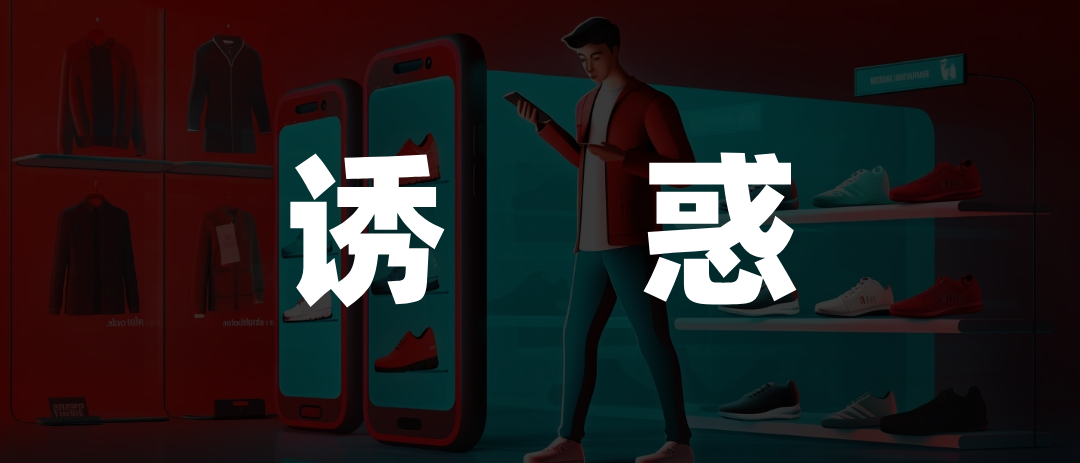
The initial stirrings of the low-price strategy can be traced back to a transformation at Pinduoduo. On July 26, 2018, Pinduoduo successfully listed on NASDAQ. According to its prospectus, Pinduoduo's performance was still unclear at the time. In 2016, Pinduoduo incurred a net loss of 292 million yuan, which widened to 525 million yuan in 2017 and 201 million yuan in the first quarter of 2018. These escalating losses seemed to indicate the company's confusion about commercialization, and the low-price strategy was not yet as prominent as it is today.
The turning point came in 2019, when Pinduoduo's losses rapidly expanded, with net losses surging to 6.968 billion yuan. The key driver of this change was Pinduoduo's newly introduced "10 Billion Subsidy" policy.
On June 1, 2019, Pinduoduo first launched its 10 Billion Subsidy program. Reports at the time indicated that Pinduoduo fully participated in the 618 promotion for the first time, announcing significant discounts on 10,000 popular products across the network in the form of "10 billion yuan in cash subsidies" in collaboration with brand merchants. After the 618 promotion, Pinduoduo did not discontinue the 10 Billion Subsidy program but instead upgraded it to a long-term platform strategy, opening an independent entrance on the homepage of the Pinduoduo app.
In February 2020, Pinduoduo further introduced the "10 Billion Subsidy Festival," increasing the subsidy rate from a maximum of 20% to 50%. Within 24 hours of its launch, over 5 million subsidized products were sold. At the time, Pinduoduo stated that the festival aimed to make every day feel like 618 and every night like Singles' Day for consumers.
This change came at a significant cost initially. In the first quarter of 2020, Pinduoduo's marketing expenses reached 7.297 billion yuan, a year-on-year increase of 49%, with a marketing expense ratio hitting a nine-quarter high of 112%. That year, Pinduoduo also plunged into deep losses, with net losses reaching 7.18 billion yuan. According to estimates at the time, for every 100 yuan of revenue in the first quarter of 2020, Pinduoduo subsidized 112 yuan.
Continuous over-subsidization accelerated Pinduoduo's losses, but simultaneously, the 10 Billion Subsidy program and the cultivation of a low-price mindset significantly boosted Pinduoduo's user base, GMV, and revenue. The turnaround was swift. In 2021, Pinduoduo's performance began to reverse, entering a fast lane of growth, with net profits surging to 7.769 billion yuan. This momentum became increasingly apparent in the following years, with net profits reaching 31.538 billion yuan in 2022 and 60.026 billion yuan in 2023.
The success of the low-price strategy is inseparable from the prevailing economic climate. The decline in consumer spending power during the pandemic rapidly attracted a massive user base to the low-price strategy, while the rapid rise of the untapped market left competitors, previously focused on consumption upgrades, in a dilemma. E-commerce enterprises struggled to determine whether the low-price strategy was a short-term phenomenon or a medium-to-long-term trend.
From an internal ecosystem perspective, to maintain low prices, Pinduoduo introduced a large number of white-label products. According to observations by Hua'an Securities, as of November 2022, third-party branded merchants accounted for nearly 33% of Pinduoduo's GMV, while white-label and new brand merchants accounted for 67%.
The rapid growth driven by the low-price strategy and the untapped market's potential seem to be the keys to Pinduoduo's success. On the other hand, Pinduoduo's rapid growth made it a force to be reckoned with. Facing this once disruptive player, learning from Pinduoduo and adopting a low-price strategy seemed to become a consensus, gradually ushering in the era of low-price competition.
02
The Butterfly Effect of "Refunds Only"

On November 29, 2023, Pinduoduo's share price surged by over 4% after the market opened, pushing its market value to $192 billion, surpassing Alibaba to become the most valuable Chinese company listed in the US.
Subsequently, Jack Ma responded rarely on Alibaba's internal network, stating, "The era of AI e-commerce has just begun, presenting both opportunities and challenges for all. Congratulations to Pinduoduo for its decisions, execution, and efforts over the past few years. Anyone can be great at some point, but those who are willing to reform for a brighter future and are prepared to make any sacrifices deserve respect."
Then, in December 2023, Taobao entered a new phase of competition by introducing the "refunds only" policy for the first time.
The history of "refunds only" dates back to 2021. Initially, this policy was mostly applied to fresh produce and orders below 20 yuan. In its early stages, the policy was relatively rudimentary, automatically initiating refunds for consumers without merchant consent when the platform detected disputes between users and merchants.
This policy has been controversial on Pinduoduo. A prominent example is the store bombing incident in 2023. On March 28, Pinduoduo launched its self-operated store, "Pinduoduo Welfare Society." Some dissatisfied merchants, believing that the platform was both a referee and a player, collectively placed orders and then quickly requested refunds from Pinduoduo's self-operated and branded stores within four hours, forcing these stores to close. According to reports, some participating merchants took extreme action due to long-standing grievances against the platform's rules.
Despite ongoing controversies, e-commerce platforms did not slow down their adoption of the policy. JD.com followed Taobao's lead in implementing "refunds only," and in January 2024, Kuaishou also joined the ranks. Earlier, in September 2023, Douyin simultaneously announced its adoption of the policy.
At this point, mainstream e-commerce platforms had almost universally adopted the "refunds only" policy.
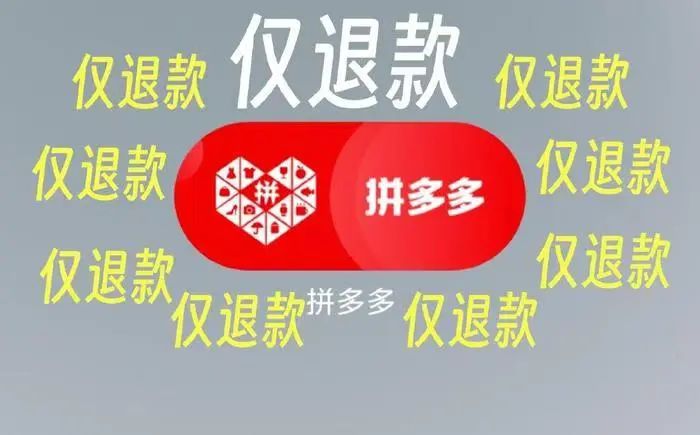
A close comparison of the "refunds only" policies across e-commerce platforms reveals a general convergence. Platforms use big data to evaluate merchants' service levels, considering factors such as store and product ratings. If these fall below a certain threshold, the platform will automatically approve consumer refunds. Douyin specifically states that if a product's positive rating is below 70%, the platform has the right to support "refunds only" for that product's transaction orders.
From a policy perspective, the original intention of "refunds only" was to reduce outdated production capacity on the supply side. The platform aimed to protect consumer rights through stricter standards, providing more convenient service models and reducing unnecessary returns. However, in practice, significant resistance emerged. When the low-price strategy was combined with "refunds only," various adverse consequences gradually surfaced.
A notable example is the return rate of women's clothing. According to public information, the return rate for clothing products on e-commerce platforms is generally believed to have risen to 40%-50%, with some women's clothing live streams or stores experiencing return rates as high as 70%-90%. Reports suggest that some consumers may purchase multiple items for trying on or exploit platform rules such as "7-day no-reason returns" and "refunds only" for "wool-pulling" behavior.
On May 31, 2024, Douyin's top women's clothing brand, "Lola Code," with 5 million followers, announced its closure. Reports indicate that Lola Code's annual sales reached several billion yuan in 2021. High return rates are believed to be a significant reason for Lola Code's decision to close. Similarly, on another platform, a merchant with 5.5 million followers, "Girl Kaila," abruptly closed its store and fled, with the store still live on May 12 but the office and warehouse closed by May 13.
As consumer spending power declined, the combination of low prices and "refunds only" seemed to create a butterfly effect, with some individuals abusing the policy for "free purchases," distorting the policy's original intent and making it synonymous with "wool-pulling." Unfair "refunds only" practices began to harm merchants' legitimate rights and make it difficult for them to operate normally. When consumers choose "refunds only" after receiving goods, merchants lose their products, effectively incurring a penalty. Many platform customer service representatives base their decisions solely on a single image, and arbitration tends to be one-size-fits-all, leaving merchants with limited effective appeal channels and high costs for safeguarding their rights. Conflicts arising from after-sales service have led to multiple incidents of merchants suing customers and pursuing goods in person.
In summary, while "refunds only" was well-intentioned as a way to win over users, the one-size-fits-all approach is escalating conflicts among platforms, consumers, and merchants, necessitating corrective measures. However, from a broader perspective, the gradual loosening and receding of "refunds only" as a key direction in this round of e-commerce low-price competition suggests that a new shift is underway.
03
No Standard Answers in the New Battleground

Douyin appears to be the first to show signs of being overwhelmed. According to reports, in January and February of this year (typically combined due to the Spring Festival holiday), Douyin E-commerce achieved nearly 500 billion yuan in GMV, with cumulative year-on-year growth exceeding 60%. However, in March, year-on-year growth fell below 40%, and it further declined to under 30% in the second quarter. In 2023, Douyin E-commerce's monthly growth generally maintained above 50%.
Coinciding with this timeframe, Douyin emphasized that price competitiveness would be a priority in 2024 since February.
Pinduoduo, facing a similar situation, recorded GMV growth below 30% in each quarter of the first half of the year. During major sales events like 618, competitors invested heavily, leading to Pinduoduo's second-quarter GMV growth falling below that of the first quarter. Previously, Pinduoduo had consistently maintained GMV growth above 40%.
According to insiders close to Douyin, its growth slowdown seems to have exceeded the company's expectations. Although Douyin's internal team is aware that offering low prices will have some impact on GMV, the rapid decline in GMV growth in the first half of the year still exceeded expectations. Currently, Douyin Group executives are participating more frequently in e-commerce business meetings to inquire about business conditions. Having judged that live streaming e-commerce cannot offer extreme low prices, the company has decided to prioritize GMV again.
In early 2024, Taobao began weakening its low-price strategy and gradually eliminated its five-star pricing system. However, it was not until July that the final decision was made when the three major platforms—Douyin, Taobao, and Pinduoduo—successively chose to prioritize GMV growth.
Prior to this low-price competition, the mainstream e-commerce platforms, except for Taobao, had experienced rapid growth rates. In 2023, Douyin's e-commerce GMV surged by over 80%, while Pinduoduo's GMV grew by around 30% or even higher in both 2022 and 2023. However, after this low-price competition, mainstream e-commerce platforms seem to have collectively entered a slowdown phase.

A consistent strategy is both a cure and a potential betrayal.
However, from a competitive landscape perspective, it appears that all players have encountered short-term ceilings. According to internal estimates at Douyin, the ceiling for its live streaming e-commerce business is around 2 to 3 trillion yuan in GMV. For Douyin E-commerce, which already reached 2.2 trillion yuan in GMV in 2023, this clearly indicates a limited growth space.
For Pinduoduo, although there are no apparent data indicators indicating growth pressure, its rare synchronization with mainstream e-commerce platforms in returning to a GMV growth strategy seems quite evident. To win this low-price battle, Douyin, Taobao, and others have targeted the introduction of a large number of low-priced popular products while recruiting numerous industrial belt service providers. The king of transparent white-label products seemingly requires new content to sustain continued growth.
Looking back on this price war, it is paradoxical that platforms entered due to their envy of growth but ended up shifting focus to another round of "GMV growth." Furthermore, this battle may have merely resulted in the demarcation of boundaries. Ultimately, fighting battles within one's area of expertise is more likely to lead to a win-win situation. From this perspective, the future of e-commerce giants cannot be encapsulated in a single answer. First, stemming losses and returning to growth seems necessary before discussing the next steps.

